A tremendous long-weekend of fine wine and foods with J., who had come in from Japan to present some of his paintings, and L. and B., Chandler, AZ residents. There were also cultural events, doppelgängers, and dangerous wildlife to avoid, all played to an '80s soundtrack. And so, before heading out for Friday's dinner, and warnings about scorpions, dangerous spiders, and Scottsdale Cougars, a quick sup at home. First, a peg of Wakatake Junmai Onigoroshi, followed by:
2006 Kiralyudvar Tokaji Sec (Tokaji, Hungary) - 70% Furmint, 30% Hárslevelu, 100% delicious. Beautifully aromatic nose of fine milled soaps, like Santa Maria Novella. Dry-ish, with very pleasant mineral and almost Muscat-like fruit.

And then, it was off to the legendary
Kazimierz, a Scottsdale "speakeasy" with a fantastical list. I say legendary and fantastical because it's not clear that they have much wine at all:
- 2003 Chateau Musar Blanc - "Probably not. It's not very good, it's a weird Lebanese wine, they've only had, like, one good vintage." Um, check please!
- "Have you any Koshu?" - "I doubt it."
- "Chinon?" - "Ahhh, no."
- 2005 Dingac Plavac Mali - "Not today, sir."
- 2001 Movia Ribolla Gialla - [in an abundance of hope and optimism, the waitress returned with glasses this time.] "Afraid we're fresh out."
- 2003 Kavaklıdere Öküzgözü Boğazkere - "Don't get much call for that 'round here, sir." Don't get much call...? Why, it's the single most popular wine in... well, Turkey.
It was rather like that. The truth may be inside, the wine list is inside, but the wine itself was largely nowhere to be found. Ultimately, they did have the 2006 Domaine de Nizas Carignane Vielle Vignes (Languedoc), which we gulped down with some overly-cumined carpaccio and a flatbread pizza. Time to move on, to Metro, for some tasty steak frites, and a 2005 Nicolas Potel Chambolle-Musigny 1er Cru Aux Echanges - lots of cherry and earth, very bright and fresh, almost too fresh, I'm curious if there was refermentation going on here, but it was still tasty.
And then, for a quiet nightcap, 2001 Philippe Delesvaux Sélection de Grains Nobles Coteaux du Layon (Anjou-Saumur) - floral + menthol nose, lots of honey, orange and orange peel, with focused acidity - good concentration, yet light in weight and relatively dry.
A slightly off-kilter start, but with good tunes and better company.
On to Saturday

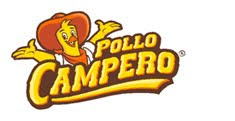
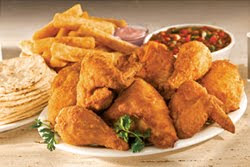
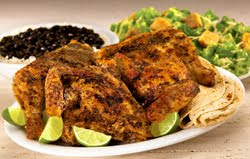
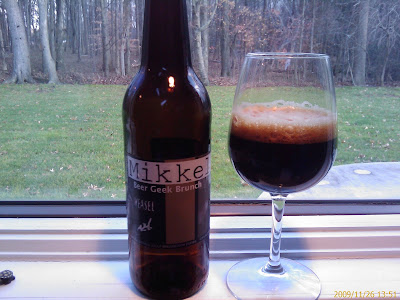 As pre-Thanksgiving aperitif with the all-vegetarian in-laws, I cracked a
As pre-Thanksgiving aperitif with the all-vegetarian in-laws, I cracked a 
 The lanterns of Kasuga-taisha.
The lanterns of Kasuga-taisha.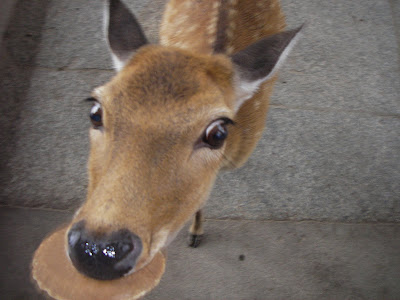 Making the acquaintance of one of Nara's sacred deer. After depleting our supply of biscuits, this one attempted to make a meal out of the tires of our rented bicycles.
Making the acquaintance of one of Nara's sacred deer. After depleting our supply of biscuits, this one attempted to make a meal out of the tires of our rented bicycles.



